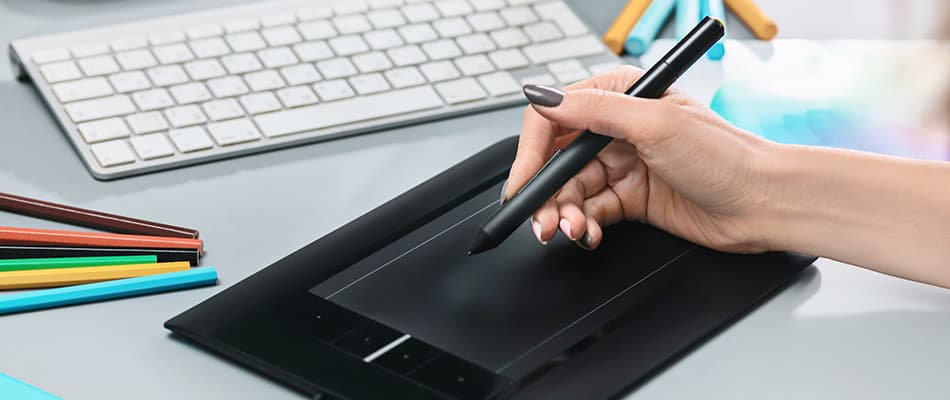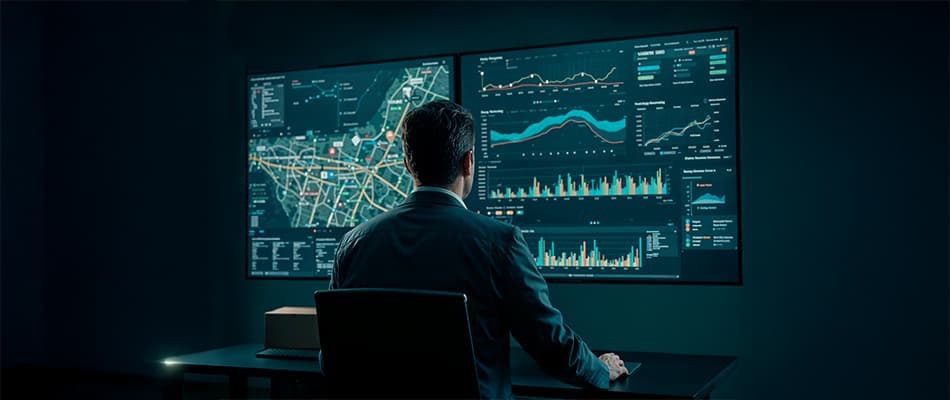What is Typography in Graphic Design?- Know Different Elements of Typography!
Typography is the art of arranging letters and text in a visually appealing way that ensures readability and clarity for the reader. It involves selecting the right fonts, adjusting spacing, alignment, and creating a balanced composition. More than just choosing attractive fonts, typography plays a pivotal role in shaping the design’s overall impact. It helps convey the intended message clearly and guides the viewer’s eye across the design in a natural, intuitive way.
In graphic design, typography is crucial for establishing visual hierarchy, ensuring readability, and setting the tone of the content. Whether it’s a website, an advertisement, or a logo, the right typography can strengthen your message, evoke the desired emotion, and make the design stand out. Proper typography enhances user experience, builds brand identity, and communicates effectively with the audience.
Read the article to learn more about what is typography in graphic design, the different elements of topography, the importance of topography in design and more.
What is Typography in Graphic Design?
Typography in graphic design refers to the art of arranging text in a way that makes it both visually appealing and easy to read. It involves selecting fonts, adjusting spacing, and organising text to enhance the overall design. Typography isn’t just about choosing pretty fonts; it’s about creating a visual hierarchy, guiding the reader’s eye, and ensuring the message is clear. Good typography helps set the tone of a design, whether it’s formal, playful, modern, or vintage. It plays a key role in the readability, mood, and effectiveness of a design, making it an essential element in any graphic design project.
Read our article on what are the different graphic design styles here
Different Elements of Typography
Once you understand what is typography in graphic design, you will know there are different elements of topography. Typography involves several important elements that work together to create a visually appealing and effective design. These elements, like fonts, spacing, and alignment, help convey messages clearly and set the tone for the overall design. Understanding these core aspects is essential for creating designs that are both functional and aesthetically pleasing.
- Fonts: A specific graphical representation of text, including size, weight, and style within a typeface.
- Consistency: Maintaining consistency in typography avoids a cluttered design. A consistent font choice across headings, subheadings, and body text ensures clarity and harmony in the layout.
- White Space (Negative Space): White space refers to the empty areas around text or graphics. It helps improve readability, create focus, and provide a clean, uncluttered look.
- Alignment: Alignment ensures elements are evenly spaced and arranged, contributing to a tidy layout. Proper alignment helps the viewer easily navigate the content, whether left, centre, or right-aligned.
- Colour: Typography colour affects readability and tone. Designers use colour to attract attention, emphasise text, or set the mood while ensuring good contrast for legibility.
- Hierarchy: Hierarchy is the system of prioritising information through text size, colour, and style. It directs the reader’s attention to key content first, like titles and headings, ensuring an intuitive flow of information.
- Typefaces: A family of related fonts that share the same design style, like serif, sans-serif, or decorative.
- Serif: Serif fonts have small strokes or decorations at the ends of letters. They evoke tradition, authority, and elegance. Common examples: Times New Roman.
- Sans-serif: Sans-serif fonts lack the decorative strokes, offering a modern, clean, and bold look. They are highly legible, especially for digital content. Examples: Helvetica, Arial.
- Decorative: Primarily used for aesthetic purposes, decorative typefaces are often used in logos or short titles to convey personality and creativity.
- Contrast: Contrast improves visual interest and emphasises key messages by varying the font size, weight, colour, or style. It creates impact and separates content effectively.
Know how to become a graphic designer here
Importance of Typography in Design
After knowing what is typography in graphic design, you need to understand its importance as well. Typography is an essential part of design that goes beyond just picking attractive fonts. It plays a significant role in creating a strong user experience, guiding readers, and delivering clear messaging. Here’s why typography matters:
- Influences Decision-Making
- The choice of typography can impact how users perceive and engage with your content. Well-chosen fonts can make your message more persuasive and increase user action.
- Builds Brand Recognition
- Consistent and unique typography helps establish your brand’s personality and makes it easier for users to recognise and remember your brand. It builds trust and helps foster a loyal audience.
- Captures Attention
- Good typography grabs users’ attention and keeps them engaged. It helps make the content more visually appealing and ensures that users stay on your website longer, improving their overall experience.
Know what is contemporary graphic design here
Learn Graphic Design with Digital Regenesys
If you want to learn more what is typography in graphic design and other aspects of graphic design, consider enrolling in a graphic design course. This can help you develop essential skills and techniques from the basics to advanced levels. You can join Digital Regenesys’s UI/UX and Graphic Design Course to upskill your knowledge. Explore this course below to see how it can upscale your understanding and abilities in graphic design.
- Learn essential UI/UX and graphic design skills for creating user-friendly digital experiences.
- Gain hands-on experience with real-world projects in web and mobile app design.
- Understand the importance of user-centric design to enhance user satisfaction.
- Learn generative AI techniques to elevate your design process.
- Get access to expert-led live sessions from industry professionals.
- Learn design tools like Figma, Adobe Creative Cloud, Canva, and more.
- Enjoy flexible weekend classes to balance learning with other commitments.
- Learn what is typography in graphic design.
- Develop a strong portfolio that showcases your design and development skills.
- Receive globally recognised certification to boost your career prospects.
In conclusion, understanding what is typography in graphic design is essential for creating visually appealing and effective designs. Typography shapes the user experience, enhances readability, and helps communicate the intended message. By mastering the elements of typography, designers can build stronger brand identities, improve user engagement, and ensure their designs are both functional and aesthetically pleasing. To dive deeper into the world of design, consider enrolling in Digital Regenesys’s UI/UX and Graphic Design Course. This course will equip you with the skills needed to excel in graphic design, including hands-on experience and expert guidance from industry professionals.
FAQs on What is Typography in Graphic Design?
What is typography in graphic design?
Typography in graphic design is the art of arranging text to make it visually appealing, readable, and effective in conveying a message.
Why is typography important in graphic design?
Typography is crucial as it influences readability, visual hierarchy, user engagement and helps establish the tone and brand identity.
What are the key elements of typography?
The key elements of typography include fonts, spacing, alignment, colour, consistency, and hierarchy, all of which contribute to a balanced and effective design.
What are serif fonts and when are they used?
Serif fonts have small decorative strokes at the ends of letters and are often used for formal, traditional designs, like newspapers and magazines
How does typography influence decision-making?
Typography can affect how users perceive and engage with content, making a message more persuasive and encouraging user action.
What is font contrast in typography?
Contrast in typography involves varying the size, weight, or colour of fonts to create emphasis and visual interest.














